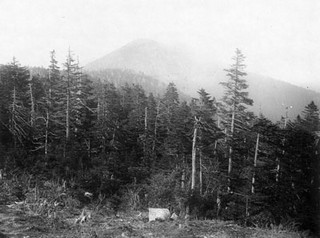Civil War
See also: Bentonville, Battle of; Blockade-Running; Fort Fisher, Battle of; Ironclads; Military Installations, Civil War; Peace Movement (Civil War); Secession Movement; Sherman's March; Union Volunteer Regiments; Civil War; Civil War to 1900; Civil War Battles; Amputations in the Civil War
Part i: Introduction; Part ii: Secession and First North Carolina Enlistments and Casualties; Part iii: Political and Social Turmoil during the War; Part iv: Unionism and Violence in the Western Counties; Part v: Military Movements, Battles, and Outcomes in the State; Part vi: References
Part IV: Unionism and Violence in the Western Counties
The Civil War was especially brutal in the Appalachian Mountains, where numerous residents of Virginia, Tennessee, and North Carolina remained loyal to the Union. Madison County, N.C., suffered greatly from recruiters and raiders. Robberies, murders, and burned-out homes were so commonplace that Confederates considered much of the county, particularly the Laurel Valley, as insurrectionary. Some Unionists became identified with the Heroes of America, or "Red Strings," a secret organization that worked to defeat the Confederacy. Richmond and Raleigh both sent troops to arrest deserters and restore "law and order" in western communities opposed to Confederate rule. When much of eastern North Carolina fell under Federal control, many blacks and some whites enlisted in Union regiments. The lack of food for families and soldiers alike fueled a growing peace movement, led in great part by William W. Holden, editor of the Raleigh-based newspaper, the North Carolina Standard.
Keep reading > Part V: Military Movements, Battles, and Outcomes in the State ![]()
Image Credit:
"View of the Black Mountains, Mitchell County, NC, c.1890's. From the H. H. Brimley Photo Collection, PhC.42, North Carolina State Archives., call #PhC42.Bx24. Available from https://www.flickr.com/photos/north-carolina-state-archives/3098217707/ (accessed May 14, 2012).
1 January 2006 | Belton, Tom
